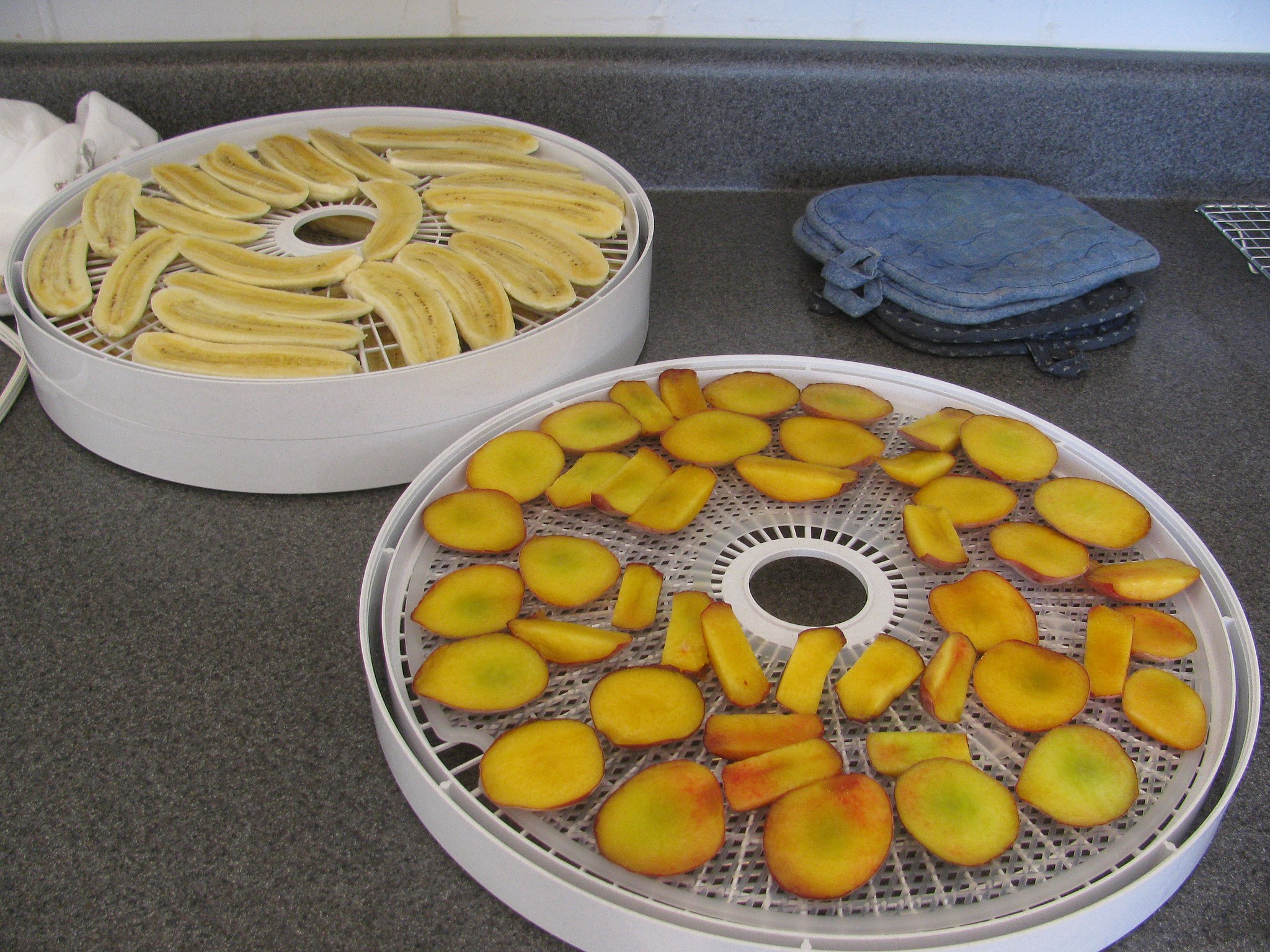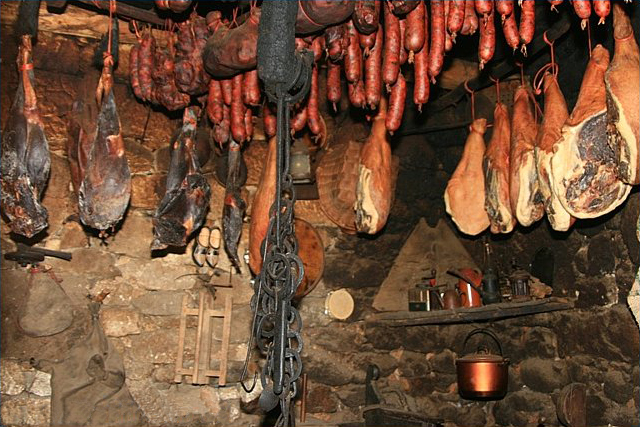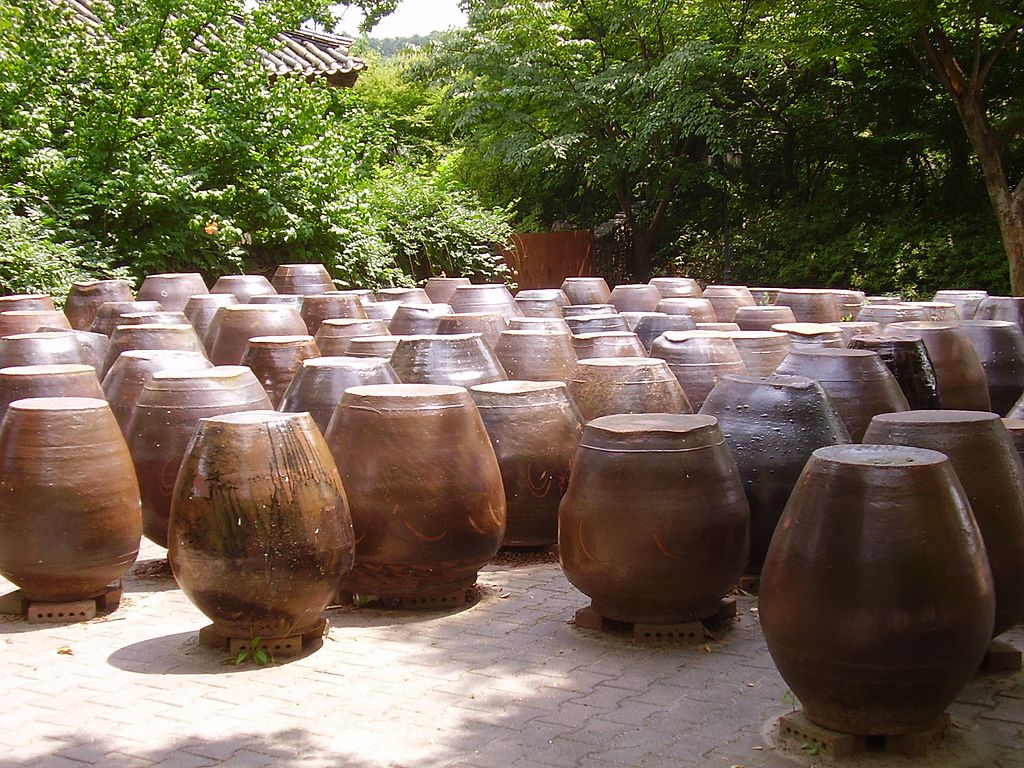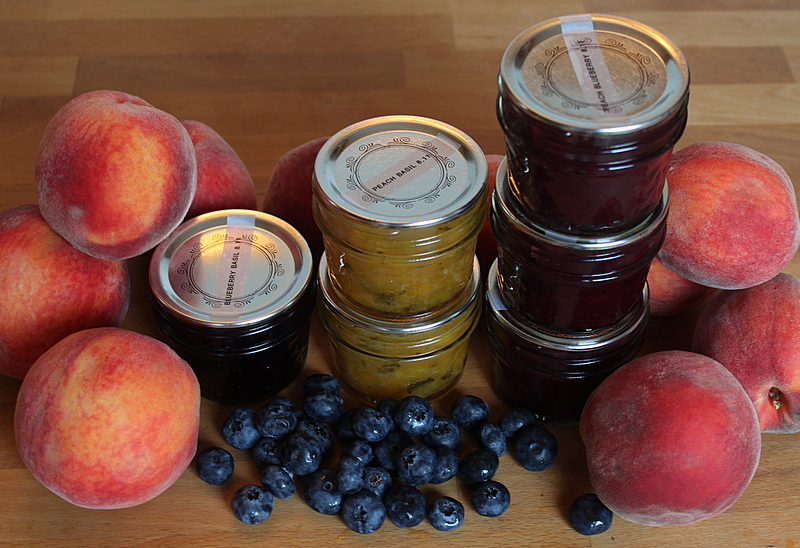Should you be storing food? If you’ve noticed your favorite grocery items being out of stock for weeks on end, you have every right to be concerned. This trend is likely to continue and may get much worse.
While many of the changes taking place in the global climate would be impossible for any one of us to shift, we can each take a step back and look for the small things we can do to bring ourselves back into harmony with the universe. Traditional methods for storing food may be a very practical step in the right direction.
Without electricity for cooling, our ancestors managed to survive mainly on locally obtained foods by eating fresh in-season, and using a variety of methods to store all excess for times of scarcity. Many homesteaders still employ traditional methods in storing food; but most of us could use a refresher course on how to return to traditional self-sufficiency.
Dehydrating

One of the simplest, and safest ways to preserve foods is to dehydrate it. Moisture is a necessary component for many of the microorganisms that cause foods to spoil. By simply removing all moisture, one can store the vitamins and flavor from fresh produce for months, or even years.
Dehydrating is ideal for many fruits and high-volume produce. The finished product is much smaller and can be stored in airtight jars without consuming precious refrigerator space. While an electric dehydrator promises perfect results, you can also achieve good dehydrating conditions without electricity. The key components are heat and air flow.
Success
You are now signed up for our newsletter
Success
Check your email to complete sign up
If you live in a hot, dry climate, dehydrating outdoors is easy, as long as you can keep your food safe from pests while it dries. A screen or thin cloth will protect against insects, but some sort of wire structure may be necessary to keep the larger critters from making off with your food.
Have you noticed that your car is unbearably hot when you first get in on a sunny day? This is just what you want for drying food. If your car sits in the sun most of the day, you can place drying racks on the flat surfaces.
Those who use wood-burning stoves know that they tend to parch the air, causing dry skin and chapped lips. You can take advantage of this feature to dry fall produce like apples when the nights get chilly.
Sliced thinly (about a quarter inch), most produce should dry within approximately 12 hours. Fruits contain sugars and acids and the finished product should be leathery. Vegetables that don’t have these built-in preservatives should be dried until brittle to prevent mold.
Curing and smoking meat

Smoking is one of man’s earliest cooking methods. For thousands of years, humans have relied on the chemicals and alcohols naturally produced by woodsmoke to kill microbes and retard oxidation. The main reason this practice is still alive is that woodsmoke also adds flavor and can improve the texture compared with other methods of meat preparation.
This slow cooking method is best for tough, fatty meats, as the fat will protect the meat from getting too dry, and the connective tissues will break down during the long smoking process. Pork butt, spare ribs and brisket are all recommended cuts for smoking. Tender cuts will dry out with this method.
Since smoking requires the use of salt for curing, it is not recommended for those on a low-sodium diet. Salting alone is often used to preserve foods like fish.
Water-glassing

Water-glassing was once commonly used to preserve eggs in a fresh state without refrigeration. Nowadays, we have fresh eggs all year round; but before the advent of big agriculture and artificial light, chickens followed a natural cycle whereby hens laid eggs when they were likely to hatch chicks that would live; namely, during the time of year with the most light. Left to their own devices, hens won’t lay during the winter months, so it was necessary to keep eggs over from spring and summer, when they were most plentiful.
Water-glassing is done by placing fresh eggs in a solution of water and hydrated lime, at a ratio of 1 ounce of hydrated lime to 1 quart of clean water. The solution is not only inhospitable to bacteria, it also reacts with the eggshells to make them airtight, sealing in freshness. Some folks in their nineties can still remember fetching these eggs from a barrel of water and using them just like fresh eggs.
It is important to use the freshest eggs for this process, before any airborne contaminants might have entered the porous shells. Fresh, clean eggs collected from your own hens or a neighbor’s should give great results. It is always a good practice to crack eggs separately before using them, as you can never be too certain of the contents until you can see and smell them.
Fermenting and pickling

Since the dawn of civilization, man has made use of microorganisms to preserve food through various fermentation processes. Under the proper conditions, natural bacteria can convert a food’s sugars into acids and alcohols that act as preservatives. The fermentation process can take days, weeks or years, depending on the food.
Some common examples of fermented foods include dairy products like yogurt, kefir, and some aged cheeses, which employ a variety of lactic acid bacterial cultures; salted vegetables like kim chi, sauerkraut, and dill pickles; soy products like tempeh, miso, and some soy sauces; and even grains like sourdough bread or grain alcohol.
The fermentation process often generates a wealth of probiotics important for digestion. Once you have the desired finished product, refrigeration is required to end the active fermentation.
A similar preserving effect can be achieved through pickling. Although some fermented foods are called pickles, the pickling process is very different. Rather than cultivating an acidic environment, pickling involves soaking foods in an already acidic solution, typically vinegar with added sugar, salt and spices. Pickles can be ready in a short time. If they are processed via canning, they can be stored in the cupboard.
Rather than encouraging the growth of bacteria, pickling destroys bacteria by heating the soaking solution. Although pickled vegetables and fermented vegetables may look similar, pickled foods generally have a stronger sour flavor, and are often sweet rather than salty. They are not rich in probiotics.
READ ALSO:
Canning

Before fruits were regularly shipped across the continent and around the world, canning was a common way to store what was in season for times when fruit was scarce. Mason jars specially made for canning will hold up well to the high temperature water bath necessary for this process. They have standard lid sizes for easy replacement so you can use the same jars for generations.
Prepared fruit is placed in hot sterilized jars, covered with hot, sterilized lids, and placed in a boiling water bath for the recommended time, usually ranging from 10 to 30 minutes. The jars self-seal as they cool, after which they can be stored in a cupboard. By making your own jams and preserves you can control how much sugar goes into them.
Although botulism is a widespread fear when it comes to canning, foods that have a high acid and sugar content — like ripe fruits and tomatoes — do not support the production of this deadly toxin. Low acid foods, on the other hand, require pressure canning to be safe.
Another fear associated with canning is the dreaded pressure cooker. Today’s “instant pots” are quite safe and easy-to-use; but as long as you follow the directions, even an old-fashioned pressure cooker will serve you well. The bonus is that they do not require electricity if you have a flame burner.
Cool storage

Root cellars were once fundamental to English homes, used to store potatoes, cabbages, various root vegetables, and apples through the winter. Settlers brought the concept to North America, and very old homes still have this practical feature: a separate structure built into the ground to maintain cool — but not freezing — temperatures.
While building a genuine root cellar isn’t exactly practical for most of us, there are simple alternatives that can meet the criteria for storing produce. Any pit dug below frost level will maintain a cool temperature year-round without freezing. Lining the pit with a solid container will prevent critters from nabbing your cache, while maintaining a suitable moisture level. Added insulation around the container and over the lid will help keep the temperature constant.
Snacks
Nuts, grains and seeds are also important foods that one may want to “put by.” Although they are less common now, nuts can be bought — or collected wild — in their shells, a natural package to protect them from decay. Traditionally one would crack them as they were needed.
While the shelf-life of whole grains and seeds is not as long as that of processed, refined flours, they are infinitely more nutritious. Crispy hard-breads, or crackers made from these wholesome staples can preserve their minerals and fibers without refrigeration. Do store them in air-tight containers, though, as they are still susceptible to grain moths.















